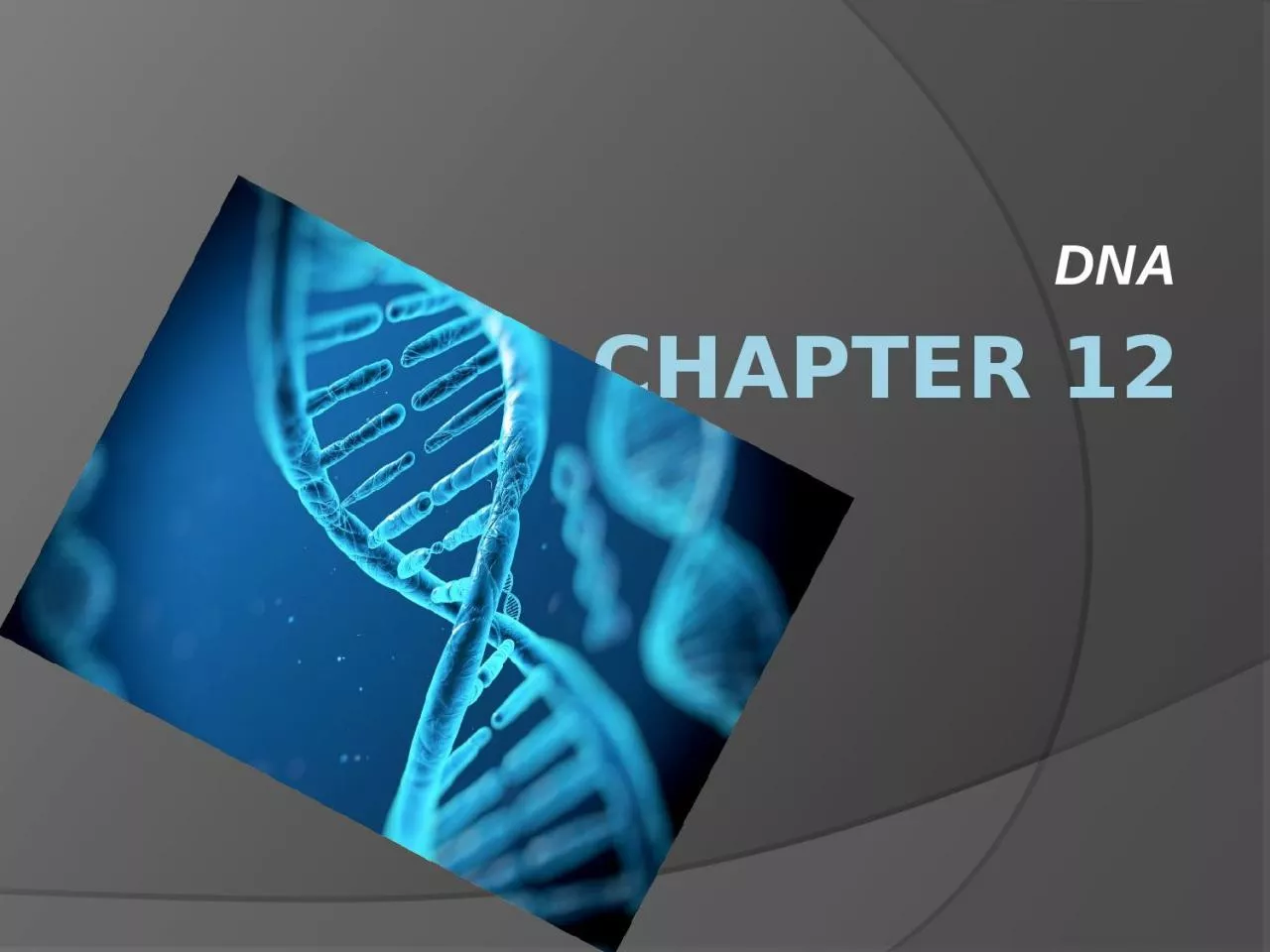

DNA Deoxyribonucleic Acid Found in the nucleus of Eukaryotic Cells mostly found loose in the form of chromatin during mitosis condenses into chromosomes Size of Genetic Material Genome ID: 916024
Download Presentation The PPT/PDF document "Chapter 12 DNA Characteristics" is the property of its rightful owner. Permission is granted to download and print the materials on this web site for personal, non-commercial use only, and to display it on your personal computer provided you do not modify the materials and that you retain all copyright notices contained in the materials. By downloading content from our website, you accept the terms of this agreement.
Slide1
Chapter 12
DNA
Slide2Characteristics
DNA – Deoxyribonucleic AcidFound in the nucleus of Eukaryotic Cells
mostly found loose in the form of chromatin
during mitosis condenses into chromosomes
Slide3Size of Genetic Material
Genome
:
All the chromosomes of an organisms (all your genetic material)
Chromosome
Gene
–
segment of DNADNA
Slide4DNA structure
What type of
macromolecule
is DNA?
A: nucleic acid
What are nucleic acids made of?
A: NUCLEOTIDES! phosphate, 5 carbon sugar, nitrogen base
Slide5DNA structure
What are the 4 types of nitrogen bases in DNA? RNA?
A: Adenine (A), Guanine (G), Cytosine (C), Thymine (T)
Slide6Base Pairing
Adenine only pairs with Thymine
Guanine only pairs with Cytosine
Slide7DNA is a
double stranded chain of nucleotides with matching/complementary nitrogen bases making up the middle.
Slide8DNA looks like a
ladder.Outside
of the ladder is made up of repeating
sugars & phosphates.
The
middle
of the ladder is made up of the pairs of
nitrogen bases.These bases are held together by hydrogen bonds.Bases are attached to the sides of the ladder by the sugar.
Slide9Antiparallel
The two strands
r
un
in
o
pposite
directions!Phosphate - SugarSugar – Phosphate
Slide10DNA Replication
DNA must be able to do 3
things:
Code for the instructions that tell a cell how to work.
Must be easily copied.
Carry genetic information that can be passed down from one generation to the next.
(parent
offspring)
Slide11When would a cell copy or replicate it’s DNA
?
During S phase…of course!
Slide12How exactly does this happen?
But….
Slide13We will make an identical copy of the double-stranded DNA by using the existing DNA as a
template for the synthesis of 2 new DNA strands.
Slide14DNA Synthesis
Each strand of the DNA has all the information needed to make the
other
half!
For Example:
Slide15Question:
What would be the complementary DNA strand for the following DNA sequence?
DNA CGTATG
Slide16Answer:
DNA CGTATG
DNA GCATAC
Slide173 Main Steps
Untwist
Unzip
Replicate
!Enzymes responsible for “unzipping” = HelicaseUnzipping = breaking of hydrogen bonds
Enzyme responsible for Replication =
DNA polymerase
Slide18Untwist, Unzip, & R
eplicate!
Site of separation is called =
replication fork
Slide19DNA polymerase
only works in one direction!
The original strand that is running in the same direction as replication is called the
leading strand
.
This strand is copies continuously in one long piece.
Slide20The other strand
can not be made continuously.It must be made in pieces.
This strand is called the
lagging strand
.
Slide21Semi-Conservative Replication
Slide22Proofreading
New DNA
DNA polymerase initially makes an error about
once every 10,000 letters it copies.
Enzymes
such as DNA polymerase actually go back, proofread & correct these mistakes!
The new error rate for DNA that has been proofread is
1 in 1 billion
!
But still some mistakes are made!
We call these mistakes
mutations
!